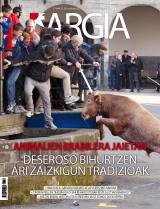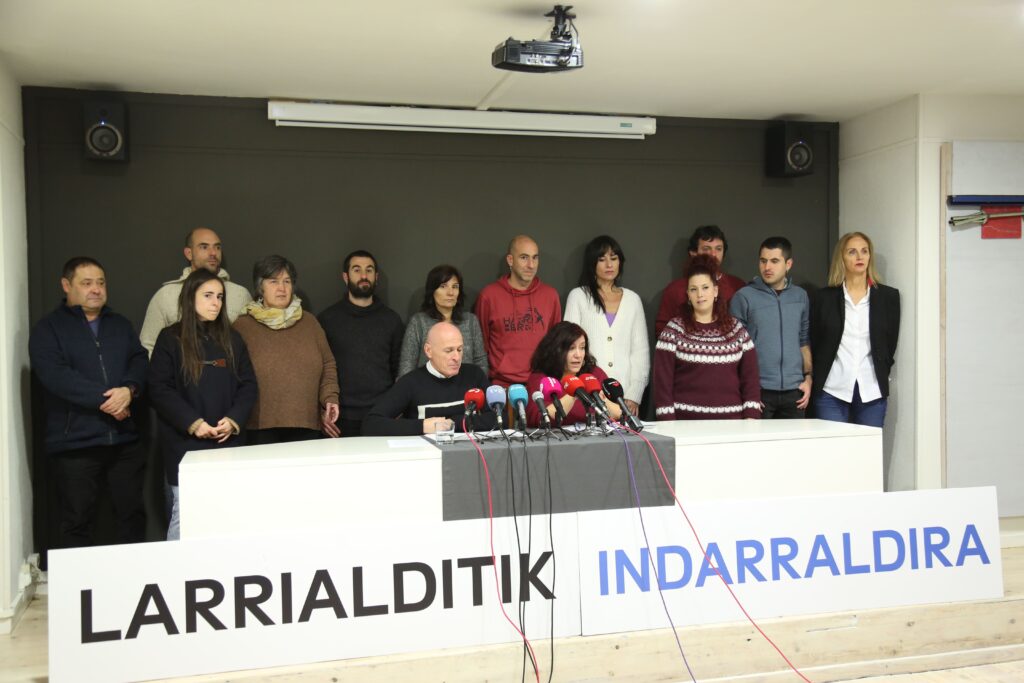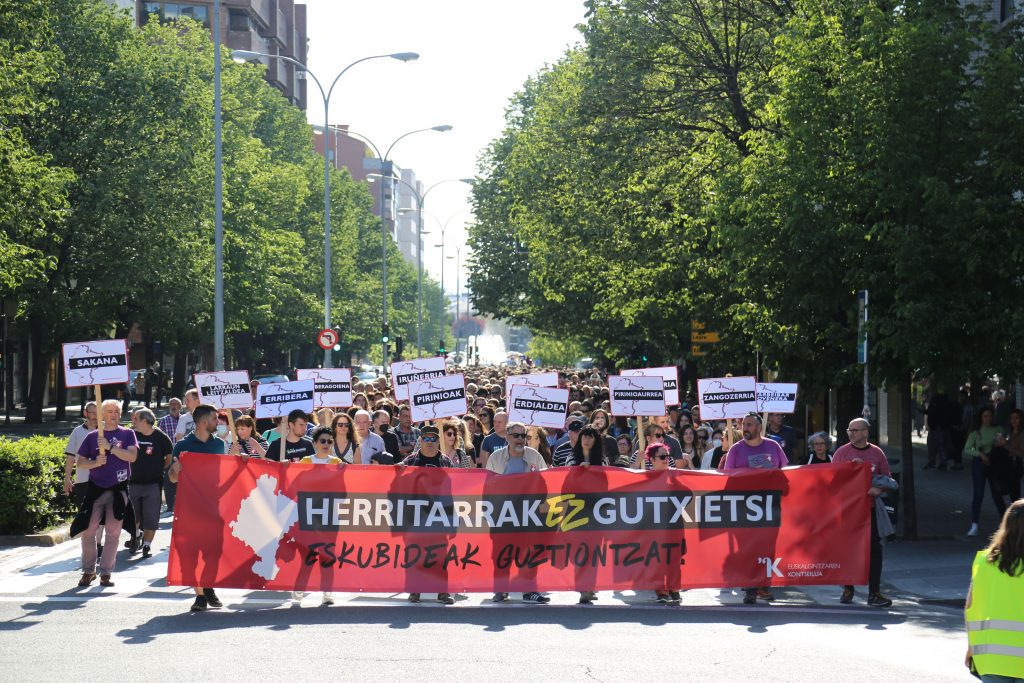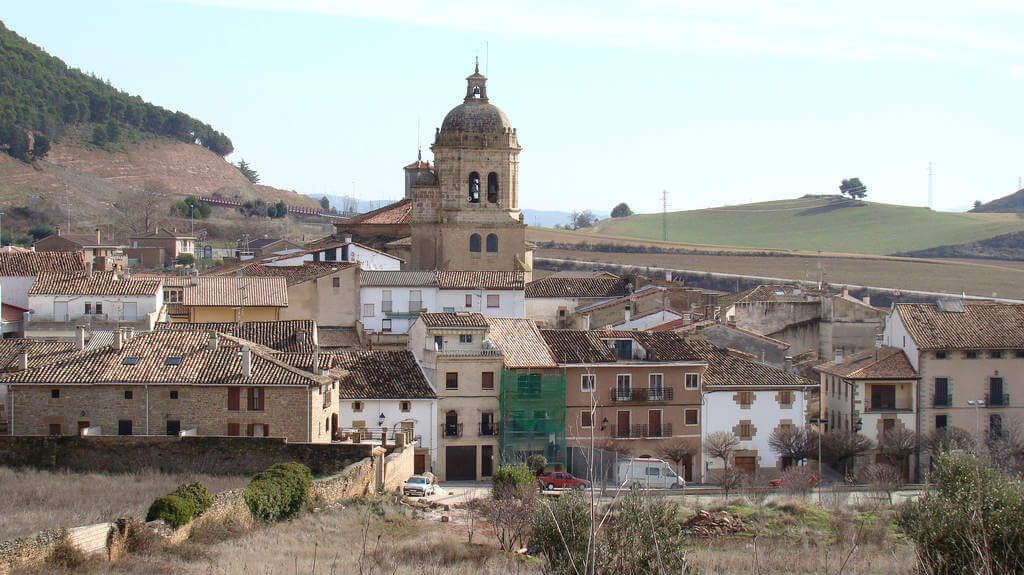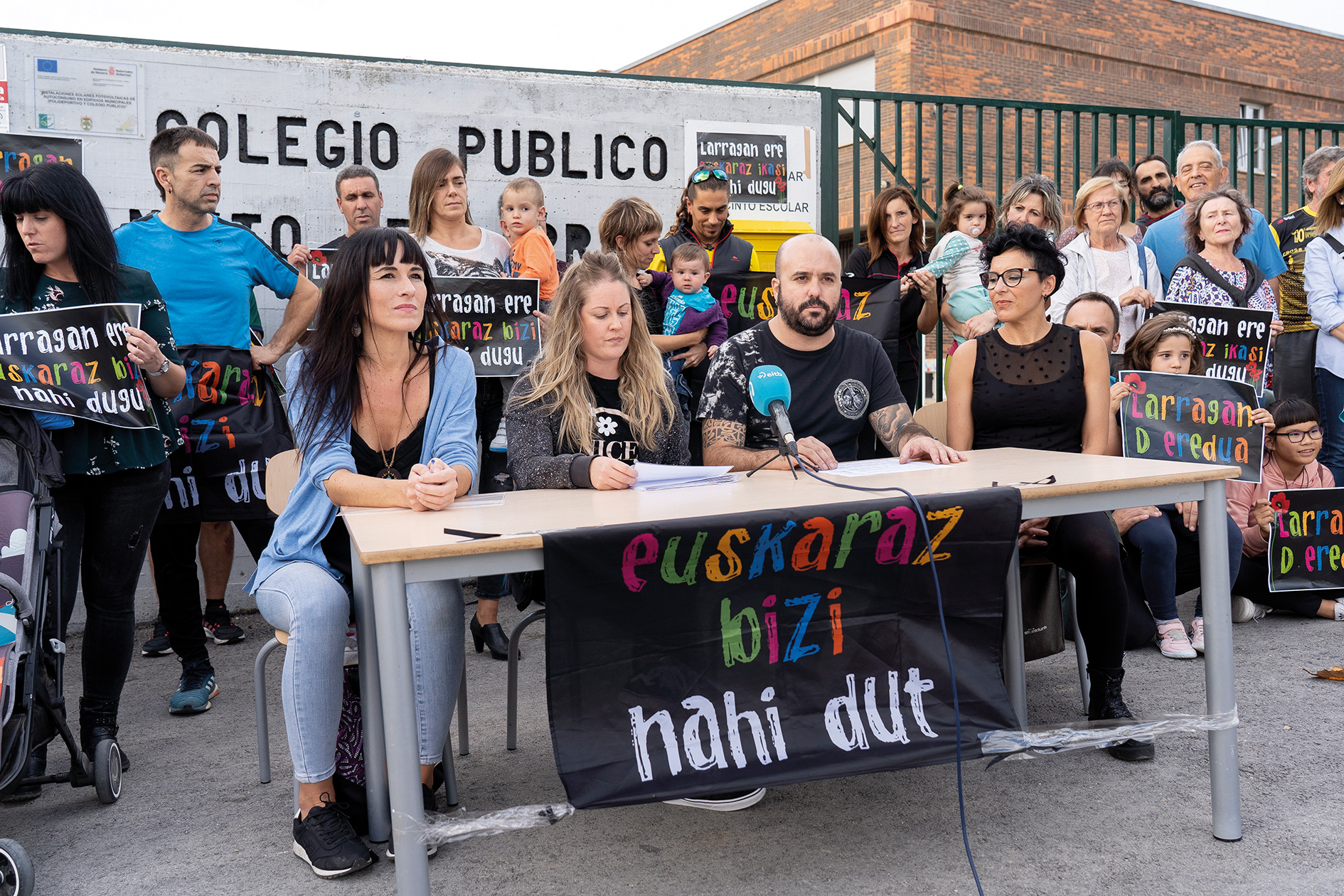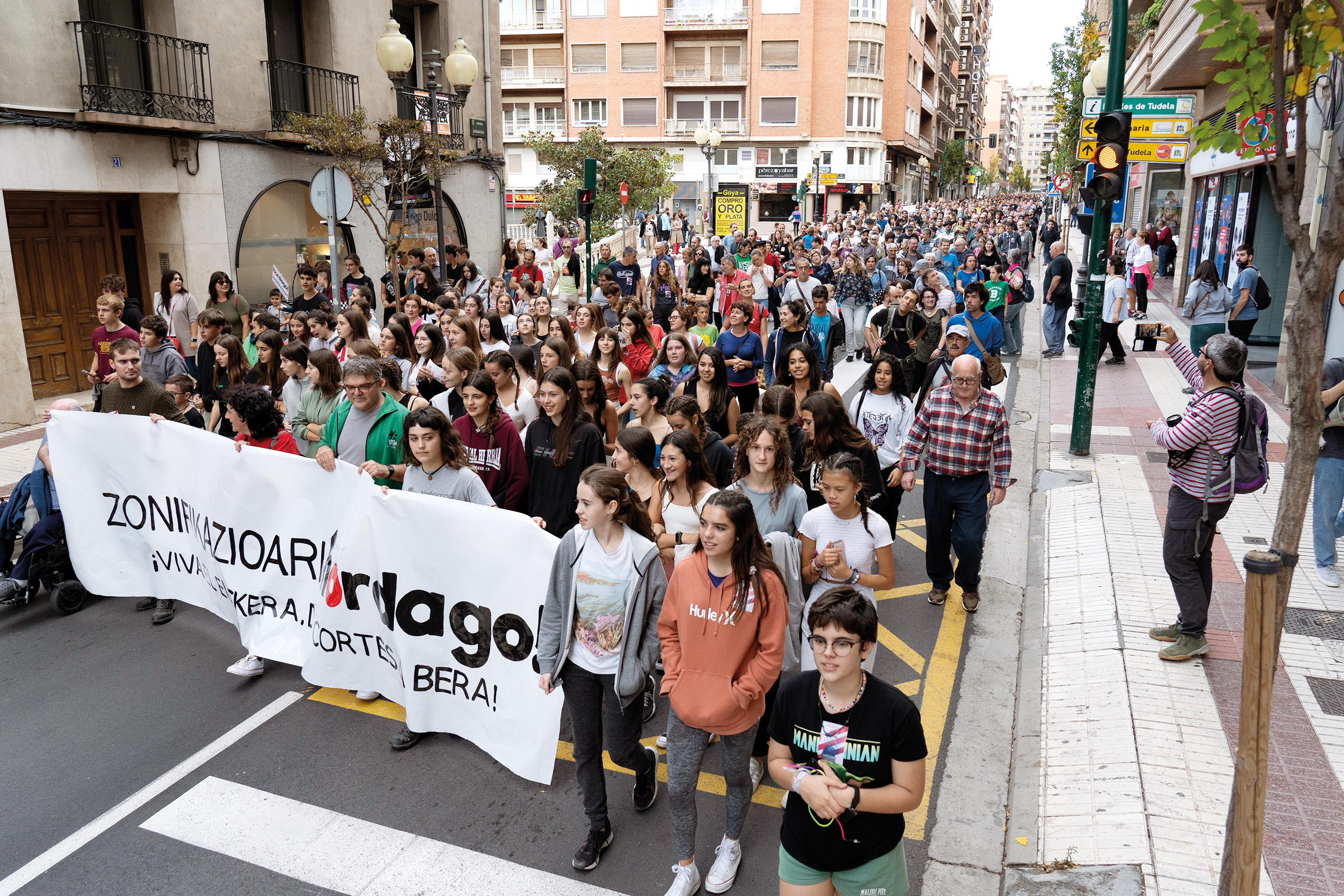Mixed zone and model D, giant steps towards the informal sector
- The inhabitants of Ancín have managed to move from the non-Vascophony area to the mixed area and introduce model D in the school of the locality. The objective is the official role, but with the steps taken, they hope to break the barriers that prevent them from living in Basque. They have explained to us how the changes will materialise.
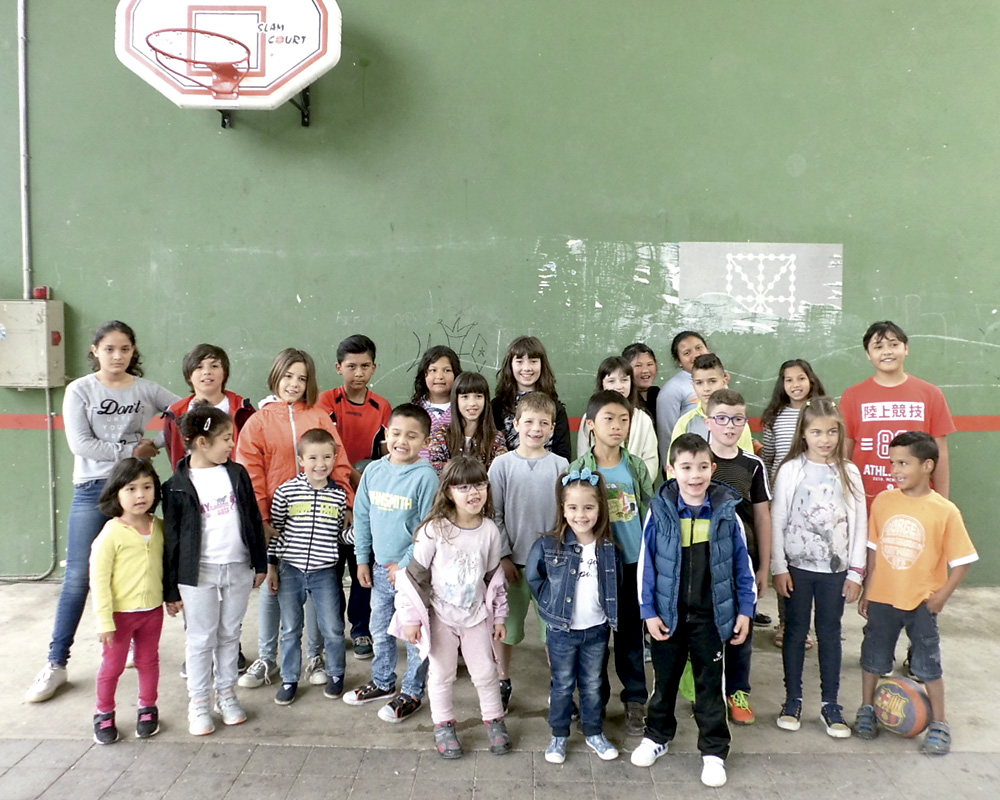
The Government of Navarre has agreed that 39,000 Navarros from 44 localities in the non-Basque area should be transferred to the mixed area. Among them are the 362 neighbours of the Biscayan town of Ancín, which has 35 inhabitants. Council councilwoman Laura Etxeberria explained that in December of last year they began to discuss towns that did not share the Basque Law and decided to present the motion to enter the mixed area as a “claim” because they seek the official status.
Etxeberria has explained that the change of scope aims at the normalization of the Basque Country and its insertion in the municipality. It has considered it essential that the workers of the City know the Basque Country and that notices are made in both languages for the citizens. But the law does not reflect the need to do so. It recognizes the right to address the inhabitants of the mixed area to the Basque Government, but not to be cared for in Euskera. The most important steps are therefore in the hands of the City Hall. The councillor considers that the change of field will drive these steps and give an institutional guarantee to the Basque: “It will be the lever to start the work done so far.”
The initiative has been well received by the people. All the groups of the Corporation have agreed on the proposal and have received the support of the citizens. However, there are opposing opinions: on the street hand sheets have appeared against the City Hall for several days. The Edil has preferred to leave that aside and to leave with words of gratitude from the citizens, and has remembered that this year’s Korrika went through Ancín and had a “terrible” welcome.
Model D, impulse to the Basque and the people
The change of area is not the only novelty in Ancín: the next course will be implemented model D in the rural school of the locality. The centre consists of 20 boys and girls, as most families transfer their sons and daughters to Estella's public school. It is precisely for this reason that in 2012 the rural school of a nearby town had to be closed, due to the lack of sufficient students. In the past, in the face of the threat, the City Hall and the school got to work because they believed that the closure of the center would be “counterproductive and sad” for the people. They went to all families to ask them what they needed to stay in rural school and answered that they wanted model D, the dining room and the transportation service.
They asked the Government of Navarra to incorporate model D in school, and at first they refused, because the number of children was too small, but they did so insistently: In 2017-2018 it will become a school center in the area, there will be eight children in model D, twelve in model A and one in model G, and transportation and dining services will be established.
“It has been very positive for Ancín and the surrounding villages, because we will avoid the closure of the center, we will strengthen the Basque country and we will give comfort to the inhabitants of the area,” said Koldo Solchaga, director of the school of Ancín.
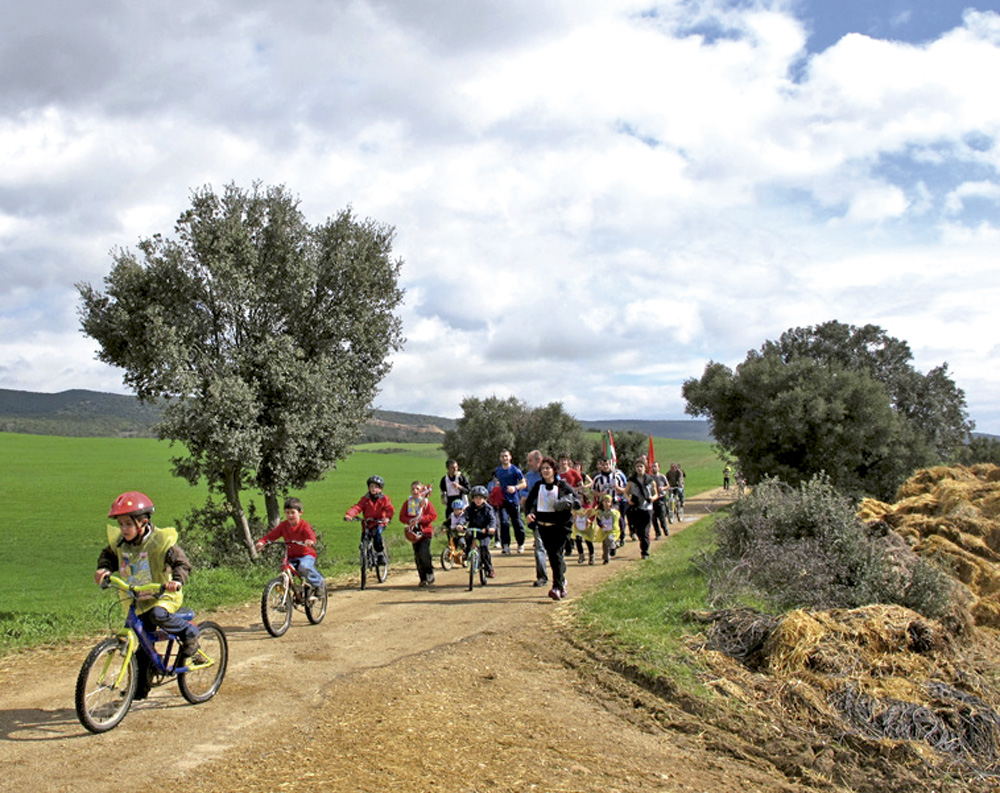
Izaskun Pina and Nuria Txasko, from Otiñano and Mirafuentes, are two neighbors of Ancín, and the next course will take their children to Ancín School to learn Euskera. So far the only option they had was to go to Estella and to do so they had to make an hour trip every day. They appreciate the comfort of innovation: “It’s been good news to be able to take the children to a small country school, also close to home. It’s sad to leave young children on the bus every morning to go to a macro-school,” Txasko said.
When they began the process of introducing model D, some doubts emerged in the center, one of them being what would happen to the teachers. As Director Koldo Solchaga explained, they saw it clear from the outset: “If we had to go to get out of school, we wouldn’t be an obstacle. We opted for model D and were willing to leave our job.” Finally, there will be the teachers who were up until now and two others who will take care of model D will be incorporated. The fact that the center is small and there are no ikastolas in the municipality has facilitated the process.
Change of field and model D simultaneously but independent
Etxeberria and Solchaga have explained that the change of area and the new school line have come "hand in hand". However, the law does not cover both things at the same time. In 2015, the Parliament of Navarra reformed the Law of the Vascuence and since then model D can be implemented in all municipalities where demand exists, even if they are from non-Vascophonous areas, provided that there are more than eight children.
Solchaga explains that one initiative has driven the other: “The City Hall wanted to take the two steps and has given us great support to introduce Euskera into the school.” According to Etxeberria, the beginning of offering model D is the most important step that has been achieved in the Basque country. In his words, the achievements of Ancín have shown that the population of Navarra wants to live in Basque and that the conditions for this can be offered: “With what has been achieved here, it is clear that zoning makes no sense.”
Antzinen ez bezala, D eredua sartu duten hainbat herritan ikastolak daude; Lizarran, Tafallan eta Lodosan, kasu. Lizarran adibidez, lerro publikoa eta pribatua bizikide dira, ikasleria-masak horretarako aukera ematen duelako. Beste batzuetan, berriz, bi ereduak mantentzeko adina haurrik ez dago. Lodosan, esaterako, ikastola euskararen biziraupenerako gune garrantzitsua izan da urteetan eta orain kolokan geratu da.
Josu Reparaz Nafarroako Ikastolen Elkarteko zuzendariaren ustetan, toki horietan bi ereduak kalteturik atera daitezke eta euskalduntzeari mesede gutxi egin: “Lerro publiko indartsu bat sortu izan bagenu, ikasle berriak erakarri eta bi ereduekin 1+1 egin, ongi legoke, baina horren ordez 1-1=0 gertatzearen beldur gara”, adierazi du. Gobernuaren babesari lotutako kezka ere azaldu du: “Lerro publiko ahula ezarri arren, aitzakia nahikoa izan daiteke ikastolei diru-laguntzak kentzeko. Gainera, egun Nafarroan dagoen gobernuak D eredua babesteak ez du bermatzen etorkizunean hala izango denik”.
Eredu aniztasuna aberasgarria dela sinesten du NIEko zuzendariak, baina formula berriak bilatzeko beharra ikusten du: “Indarrak batu behar ditugu, ez bereizi. D ereduaren zabalkundearekin 1+1=2 egitea lortzen badugu, zorionekoa aldaketa”.
Last Thursday the PSN and Navarra Suma rejected in the Parliament of Navarra the proposal of law to enter the mixed area of Mañeru. In addition to refusing, the PSN proved harsh. Although the City of Mañeru unanimously approved the inclusion in the mixed area, the law was not... [+]
On December 15, the "Basque Law" will be 36 years old. 36 years since the division of Nafarroa Garaia in three areas. 36 years since the division of our linguistic rights into three areas. Living in Basque as an option associated with a specific area.
Since then, we Basques have... [+]









